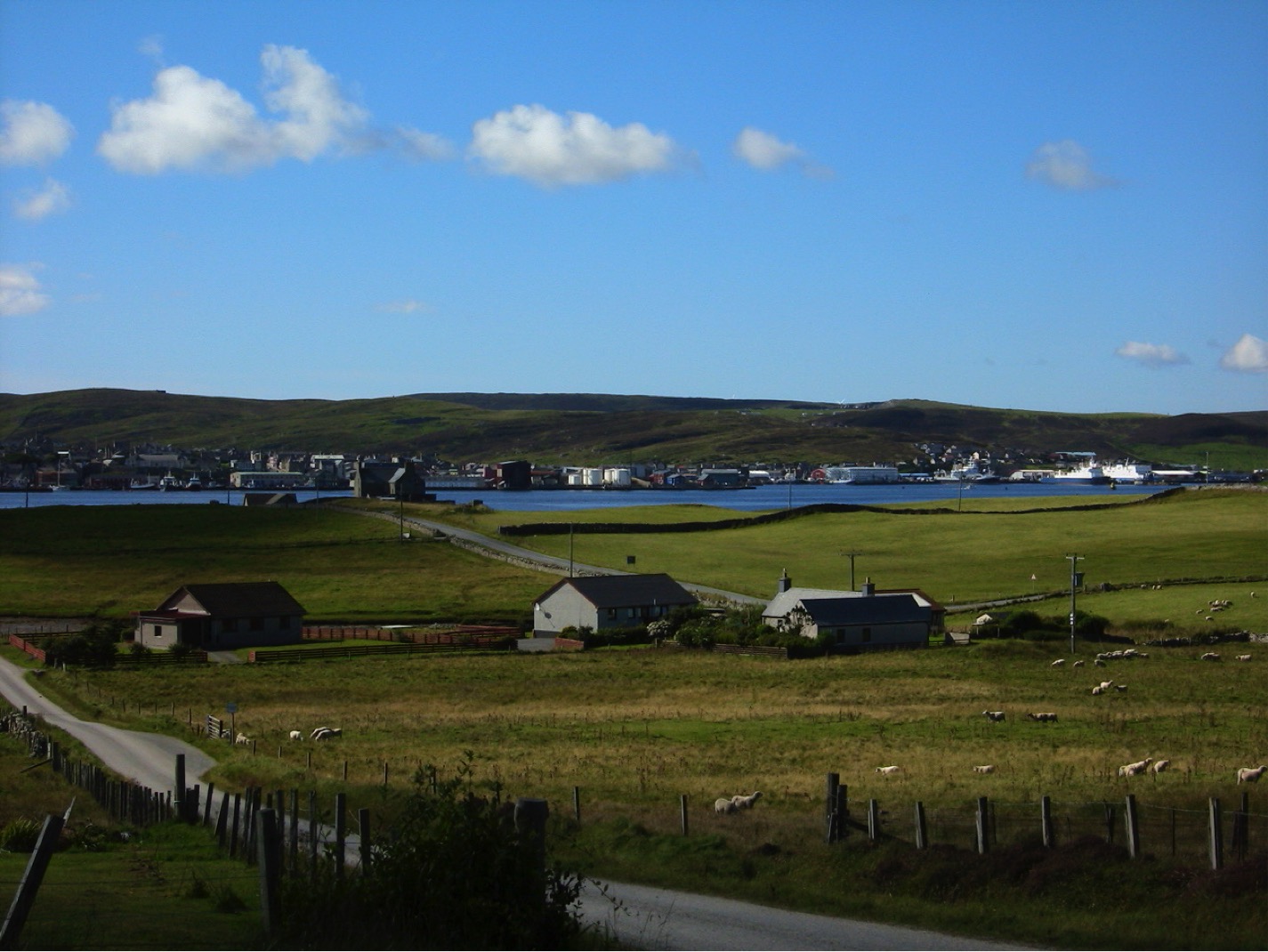Tekst: Caitlin Alexander | Foto: Wendy / Flickr
The end of the 9th century saw the Scandinavians invade Shetland due to the disproportionate amount of resources available to people there. This Viking expansion meant that Norsemen took over the island, establishing their own laws. The Scots later raised an interest in regaining ownership of the island, but after diplomatic talks and the Battle of Largs in 1263, they were no further forward.
Later, Norway desired to make peace with Scotland as their trade with England was suffering. King Christian I of Denmark and Norway’s daughter, Margaret, had become engaged to James III of Scotland. The King had no money to pay her dowry, and so he pawned his interests in Shetland in 1469 to help pay for her wedding. And so ends, one might think, the Scandinavian chapter of Shetland’s history. But several traces of Scandinavian – and Norwegian – heritage are found clear as day on this Atlantic group of islands.
Nynorsk and Nynorn
Norn, an old North Germanic language (like, say, Old Norse – English, on the other hand, is counted among the West Germanic languages), used to be spoken in Shetland. This language started to become extinct and was replaced by Scots when the Northern Isles were conveyed to James III in 1469. This pledge to Scotland meant that, by the 15th century, most people on the island were bilingual, but still with Norn is their mother tongue until mid-17th century.
The language has since died out, but is still used in a ceremonial fashion, for the names of ferries and places, and also for describing the pattern variation of sheep on the island. Even the present-day motto of the islands, með lögum skal land byggja (with laws shall land be built), remains familiar to students of Old Norse; and the dialect of the Shetlanders today incorporates some Old Norse words and features. A revival effort is underway, inspired by Norway’s Nynorsk. Its name? Nynorn.
Longships and goldfish ablaze
Similarly, much of the culture and heritage have survived from the Norse rule: The toponymy of Shetland shows that almost all place names are Norse, and a very Scandinavian style of house can be seen on the island, often with the building materials being supplied from Norway.
Some of the island’s traditions have their Scandinavian roots. Up Helly Aa is a fire festival that is held annually, on the last Tuesday of January, on Shetland. Its meaning can be established by scrutinising the etymology. The word “up” comes from the Old Norse uppi, which signifies something coming to an end (as in “time’s up”); the word “helly” means “holy day”, resembling Norwegian hellig, suggesting a festival to end the holy days – the end of Christmas. During the festival, a Viking ship is burnt in the capital, Lerwick, and songs such as “The Norseman’s home” are sung.
Trying to keep the heritage alive, even primary school children are being taught some Norwegian traditions as they were during the joint rule. Recently, a school on the neighbouring Orkneys gave a traditional Norse flaming Viking boat burial ceremony to their class pets, two goldfish.
Another independent oil state?
But what does all this mean in practice? When Norway regained independence in 1905 the authorities in Shetland wrote to King Haakon VII, stating: «Today no ‘foreign’ flag is more familiar or more welcome in our voes and havens than that of Norway, and Shetlanders continue to look upon Norway as their mother-land, and recall with pride and affection the time when their forefathers were under the rule of the Kings of Norway”
Another glimpse, perhaps, can be seen in the Shetland treatment of its oil wealth. The majority of North Sea oil in the United Kingdom is close to Shetland. The fear was that this would harbour unwelcome exploitation which would harm the environment. The local authority council in Shetland strategically pursued legislation through the Westminster Parliament which would give the island more autonomy over their coastline.
Companies that wish to drill oil now must pay a disturbance fee to the council, and this money gets put into a charitable trust, which is a separate legal entity from the council. This disturbance fee is remuneration for the harm and change that will occur as a result of the drilling. The Shetland Charitable Trust, established in 1978, uses the oil money for the benefit of the community, be it to fund local bus services or various recreational activities.
This idea was not unprecedented. It was taken from Norway’s pension fund, highlighting the influence that Norwegian politics has had on Shetland. Similarly, one might think, the islands are now investing heavily in renewable energy, and last year opened the world’s first operational tidal power turbines, aiming to phase out diesel generators.
It is an interesting time for politics on Shetland. At the time of the Scottish independence referendum, a polemic against a possible “yes” outcome was voiced. The island expressed that, in the event of this vote, they would negotiate to become self-regulating, much like the Isle of Man. For now, these negotiations are not necessary but, in the future, the island may become completely independent.
With Shetland’s buzzing oil industry and recent breakthrough with tidal power, there is speculation over the cogency of its independence. In years from now, we may find ourselves having to discuss both the Scottish and Norwegian influences of an independent Shetland.
![]()
Caitlin Alexander is an undergraduate Law student at the University of Glasgow and is studying for a year at the University of Oslo. She hopes to pursue a career in human rights.





